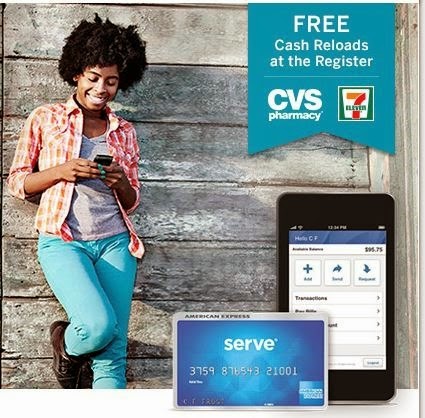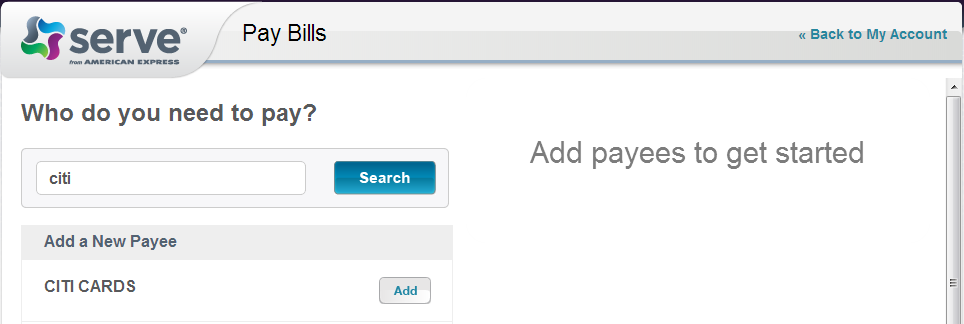The other day, I discussed how my father just opened up 5 new credit cards each with a rewarding sign up bonus totaling up to $2,500 of value if he just spends $14,250 in the next 90 days.
Now, that's a lot of coin to throw around in a short period of time! But I'm going to explain how we're able to do it without buying junk we don't need or getting into debt!
According to CNN, there are approximately 10 million American households that do not have a bank account. Contrary to popular myth, these individuals are not all illegal immigrants without social security numbers or unemployed homeless. In fact, because many banks charge so many fees to maintain a checking account, many working American citizens just can't afford to keep thousands of dollars tied up in a bank account just to avoid $10-50 per month in bank fees.
My family knows a lot about this because in a small business our friends run (Five Star Painting IL), we often encounter individuals who have these banking challenges, so we sometimes suggest prepaid products such as Amex Serve to help.
While my fellow 2 year old toddlers may not understand what the big deal is, just imagine if your parents didn't have a place to put their money. As you get older, you realize a piggy bank just can't cut it anymore. But aside from just physically holding your money, their bank is probably how they actually get their money. I mean, unless your parents get paid in hard cash by their employers, they'd still have to find a place to cash in their weekly paychecks. So for the 10 million unbanked American households, their options are pretty limited and quite horrible.
Problem #1 Getting Cash
There are "Pay Day Lending" shops that charge a very expensive fee for fronting the cash to you while the check clears. Because you don't need a credit check and can get money quickly, anyone without a bank account can easily borrow money from the Pay Day Lender. To get this short term loan, the worker pays a high upfront fee of between $15-$20 for every $100 they need. Then when their paycheck comes in, he hands it over to the Pay Day Lender who cashes it to pay back the original loan.
Now, I'm half-Jewish and half-Asian, so I can do math pretty quickly. That fee is equivalent of charging 15-20% interest...if it were borrowed for 1 year. But since people get paid weekly or every other week, the implied annual interest rate for the short period of time is actually closer to 350%!
Problem #2 Paying Bills
Now, even if you don't have a bank account, you can still open a monthly cell phone plan, rent an apartment, sign up for cable/internet and even open up a credit card. What you cannot do without a bank account, however, is send checks to pay these monthly bills. So these unbanked individuals have to drive around town, bringing cash to the payment centers to pay off their bills. And guess what, these payment center usually aren't open during after-work hours or weekends. So the unbanked have to miss 1-2 days of work each month just to pay off their bills using cash they probably needed to short-term borrow from expensive Pay Day Lenders.
But Baby Songer, what does all this have to do with Lap Child Diaries? Well, glad you asked.
WARNING UPDATE: This is pretty advanced and definitely not recommended for anyone. For financially undisciplined people (ie, anyone who carries debt balances on their credit cards), it can be deadly to your financial health. For example, if they catch you, they will shut you down and then freeze your money for many months while they resolve it. Meanwhile your credit card statement comes due.
Also, this prepaid card activity is probably very similar in nature to how drug dealers launder their money, so keep in mind that while you're not doing anything illegal, it's still suspicious for the stores and the credit card companies.
 Prepaid Card Accounts
Prepaid Card AccountsAmerican Express, Vanilla, GreenDot, Paypal and Rush have all jumped into the Prepaid Card market specifically to address the need for these 10 million unbanked American families. While my father is not among the unbanked, he's one of many that are actively participating in the Prepaid Card movement.
Basically, all these companies are trying to function as a bank's checking account without actually having physical locations. Using their Prepaid Card products, you can deposit your paychecks right onto your Prepaid Card and then use it like a debit card to pay for things. Some advanced Prepaid cards products even have bill pay features either by offering (a) physical checks to send in the mail or (b) online bill pay websites where you can send money from your Prepaid Card account to anyone with a physical mailing address.
Manufactured Spending
The concept of Manufactured Spending is to create credit card spend without actually losing any money. From the perspective of the credit card companies, banks and stores involved, you're making purchases that will count towards your minimum spend requirements and general points earning transactions. From your perspective, however, you're just transferring money from one place to another and hopefully end up close to neutral (i.e., not actually spending anything). In this zero sum game, the winner is clearly the successful Manufactured Spender. The loser is probably the credit card issuing bank who had to give you all those frequent flyer miles or hotel points, but trust me, no one's going to cry for the banks because they didn't make as much money as they should have.
So How Does This Actually Work?
My father walks into any drugstore, gas station or grocery store that sells an American Express Serve Prepaid Card. The card costs $2.95 and can be loaded up to $500 initially. Some places that are trying to sell these products are even waiving the $2.95 activation fee, so you can buy the card for free and load it up with $500 of cash for just $500 on your credit card.
So assuming my father uses his new Chase Ink Bold Visa card, it would show a transaction for $500, but he would have a new temporary Serve Prepaid Card loaded with $500 that he can use anywhere American Express is accepted. Now he's $500 closer to hitting the $5,000 he needs to spend to earn his 50,000 Chase UR points, but hasn't actually lost any money. It was just transferred from one account to another.
Next, because he's 18 years or older, my father can take this temporary Amex Serve card and register it to a permanent Serve account with online features and reload ability. At this point, American Express will ask for his social security number, date of birth, home address and cell phone number. Upon identity verification approval (not a credit check), he'll be mailed a permanent Serve card with his name on it.
 Until the real card comes, however, he can go up to the cash register at any CVS or 7-11 store and load up to $500 per day on his temporary card, up to $5,000 per calendar month. And while I suppose there may be some stores that will not allow you to load using a credit card, all the ones we've tried in Manhattan allow it without any questions, even if my father is loading my mother's Serve card (as long as the credit card is under his name). UPDATE: Unfortunately, as of April 3, 2014, CVS is no longer accepting credit cards as payment for Serve Reloads.
Until the real card comes, however, he can go up to the cash register at any CVS or 7-11 store and load up to $500 per day on his temporary card, up to $5,000 per calendar month. And while I suppose there may be some stores that will not allow you to load using a credit card, all the ones we've tried in Manhattan allow it without any questions, even if my father is loading my mother's Serve card (as long as the credit card is under his name). UPDATE: Unfortunately, as of April 3, 2014, CVS is no longer accepting credit cards as payment for Serve Reloads.Since he's doing it directly via the cash register (and not using a 3rd party intermediary prepaid load card), there are no extra fees. A $500 load costs exactly $500. Then once he receives the permanent card, he can load up to $1,000 per day at any CVS or 7-11 store (but does it in two separate $500 transactions).
WARNING: while many banks/credit cards work perfectly fine, there are some that may treat this transaction as a Cash Advance and charge you fees/interest for that. Please do your own research and experiments with smaller amounts before going crazy.
So now that my mother and father both have their own American Express Serve accounts, that's $10,000 of April credit card charges they will be able to make over 5 days. And technically, that wouldn't actually cost them anything, because all the money is just transferred from the credit card to Serve account. But to Chase, Citi, Barclays, US Bank and Discover, they look like he bought $10,000 worth of stuff at CVS or 7-11. Of course, my father would be wise to split up the purchases across a few different cards so as not to max out any single one of them, or worse, draw suspicion from some credit card fraud prevention analyst.
Unloading Prepaid Cards
Now that my parents will have two Serve cards loaded with $5,000 on each of them, how do they access the money? Theoretically, you can just go to an ATM and withdraw the balance. But in practice, that would be the same suspicious activity that drug dealers and money launderers would do, so my father avoids drawing such nefarious comparisons.
Instead, he does something a more upstanding citizen would do - pays his bills. Specifically, his credit card bills, especially since he will now have $10,000 of CVS charges across his credit cards. Using the Serve online bill pay system, he can just load in the account information for his credit cards and then submit a payment. American Express will then send the money from his Serve account and within 2-3 business days, the payment will post on his credit card account.
Again, it would be wise not to over-simplify things for the American Express fraud detection algorithm. So don't expect my parents to make a single $5,000 credit card payment to Barclays. Instead, you're more likely to see one $3,023 payment to Chase, a $230 payment to US Bank, another $425 payment to Citi and a $1,234 payment to Barclays. In between, he'll make a few debit card charges at the local bagel shop and or pay for a taxi here or there. Then he'll keep about $40-60 left on the Serve card into May before he loads up another $5,000 on each Prepaid Card.
So if everything goes smoothly, using this strategy, it should be somewhat easy for my mother and father to "spend" $10,000 a month without actually paying for anything. All of a sudden, $14,250 in three months doesn't seem that difficult.
Final Manufactured Spending Tip
Clearly you can pay for a lot of things using Serve's online bill pay feature, including pediatrician visit fees, cable, telephone, auto insurance, and possibly even your rent or mortgage. However, we only use it to pay credit cards, because (a) it keeps the outstanding balances lower and (b) my parents would rather pay for their cable bill using their Chase Ink Bold (earning 5x UR points) or the pediatrician visit with their SPG Amex (and earn SPG points). The only thing they truly cannot use a credit card to pay for is their credit card bill. So we might as well use the Serve online bill pay for something they cannot earn more points with.














_2007.jpg)

